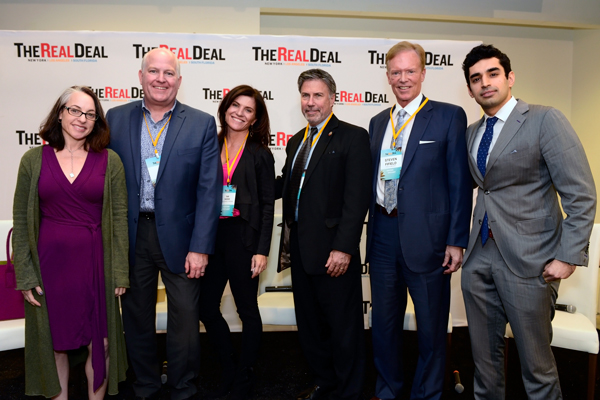Trending
Experts talk LA housing shortage, millennials and the “LAIR” at The Real Deal’s Westside forum
The Real Deal panelists explored the future of residential development

It’s no secret that Los Angeles has a serious shortage of affordable housing. Gubernatorial candidates are pledging a dramatic increase in new housing and Mayor Eric Garcetti is claiming state Senate bills don’t do enough.
In the Westside, home prices have skyrocketed amid low supply. Proximity to the beach has always helped.
The residential real estate market took center stage at The Real Deal’s Westside forum on Wednesday at the Water Garden in Santa Monica, where experts in a variety of industries offered insight on existing conditions and what the future may bring.
“There’s a misguided impression that we have an affordable problem,” said one of the panelists, Fifield Companies’ founder and CEO Steven Fifield. “We actually have more of a workforce housing problem.” Fifield said that Angelenos at the top and the low end of the job wage-earning scale have housing, but those in the middle are struggling to find places to live.
Residential brokerage owner Tami Pardee, the panel’s residential expert, said there has been an increase in the number of people sharing bedrooms so they can afford to live in Venice. Her clients, many of them Silicon Beach techies who work at places like Snapchat and Google, aren’t exactly low-wage earners, either.
“There’s gotta be some changes made on a public level,” she said.
Tom Wulf, an executive at Lowe, said the city’s building regulations, particularly regarding density, need to be addressed. “We need a global change.” In 2016, voters did approve Measure JJJ, which allows for higher density residential constructions near transit stations and those in which the developer includes affordable units.
Culver City Mayor Jeffrey Cooper, meanwhile, was on the hot seat. Cooper, who is about a month from ending his second term, agreed that Westside has a housing problem, but acknowledged his “NIMBY-istique” reservations about building vertically on his home turf.
“Culver City was a blue collar city,” Cooper said. “We understand the needs of people moving in, but [they’re] very different than they were 30 years ago.”
Those people are now increasingly tech-oriented. The Westside city has attracted the likes of Apple and Amazon in recent months, prompting Hiten Samtani, TRD’s digital editorial director and panel moderator, to nickname Culver City a “tech Mecca.” Cooper, relishing that name, requested to “sit on that” for a minute.
“Tech is integrating into so many different fields that I don’t see it fading out,” Cooper said. “Tech itself is here to stay.”
But tech is not the answer for everyone. Seritage Growth Properties’ Kacy Keys said she’s not actively seeking a tech tenant for her firm’s adaptive reuse project at the historic Sears on Colorado Avenue in Santa Monica.
“One of the challenges with tech tenants is credit,” Keys said. “Whether it’s a WeWork or Riot Games, establishing credit in order to make that lease happen for 10 years is an important facet of it.”
On the residential side, credit doesn’t seem to be a problem for “millennial techies who want to live by the beach,” Pardee said. But their interests extend further than a home with a good view, she said. Millennials are all about the experience, and are increasingly ditching the “white modern boxes” for something with more soul, Pardee added. Now, there is something called a “Love and Inspiration Room,” or “LAIR” for short.
“There used to be a man cave,” Pardee said. “But women wanted a room. And guess who’s making the decision in a marriage?”




